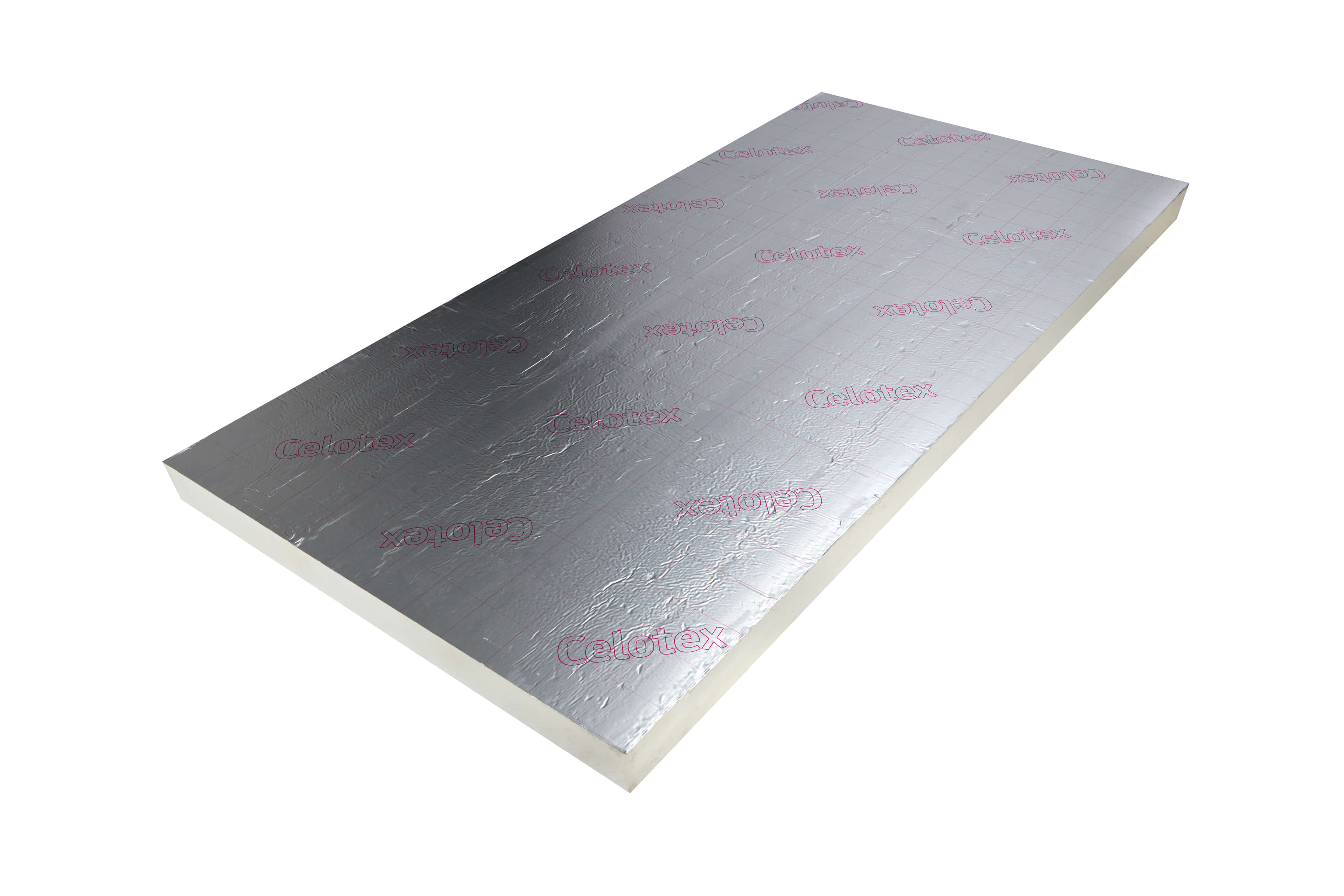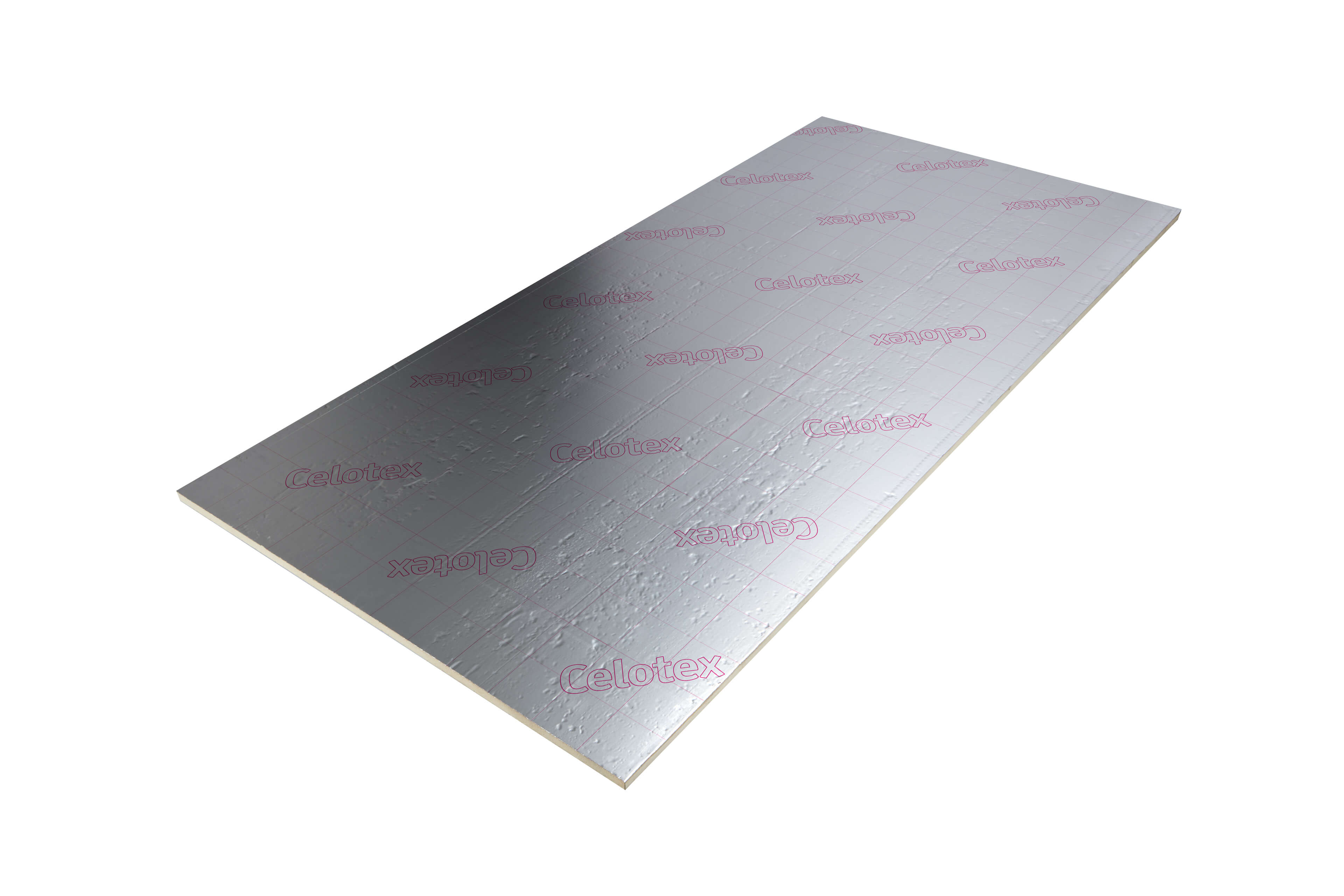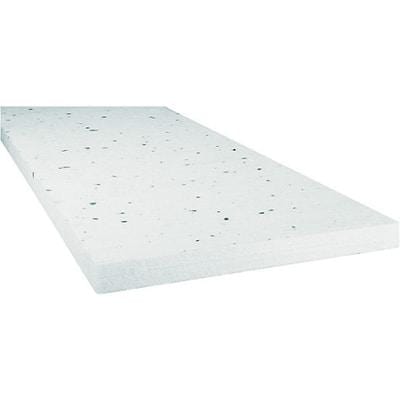Floor Insulation Boards
(50 Products)Floor insulation boards create a stable, insulated barrier that reduces heat transfer through the floor, preventing warmth from escaping into unheated areas. This facilitates a more comfortable indoor temperature while decreasing the need for mechanical heating, making these boards a key element in energy-efficient building design.
What are Floor Insulation Boards?
Floor insulation boards are insulation panels used to combat heat loss through a building’s floor. Whether in direct contact with the ground or placed above suspended timber floors, these rigid panels help to seal off energy-draining gaps.
Ideal for use in both new builds and retrofitting projects, they offer versatile solutions for different floor types, including solid concrete and suspended timber floors.
Types of Floor Insulation Boards
Several types of rigid insulation boards are commonly used for floors. Each has unique thermal, structural, and moisture-resistance characteristics.
PIR (Polyisocyanurate) Boards
Products: Celotex GA4000, XR4000; Unilin Xtratherm Thin-R
- Composition: Closed-cell PIR foam core with foil facings on both sides, usually low-emissivity aluminium.
- Thermal Conductivity: Approx. 0.022-0.026 W/mK.
Performance Characteristics:
- Traps insulating gases in its closed-cell structure, offering low thermal conductivity.
- Foil facings reflect radiant heat and act as a vapour control layer.
Common Applications:
- Solid concrete floors (above or below slab)
- Suspended timber floors
- Underfloor heating systems
Available Thicknesses: 20mm to 200mm
Phenolic Foam Boards
Products: Kingspan Kooltherm K103
- Composition: Fine closed-cell phenolic foam with foil composite facings.
- Thermal Conductivity: Among the lowest available, approx. 0.018-0.020 W/mK.
Performance Characteristics:
- Superior thermal resistance allows thinner build-ups.
- Excellent fire performance compared to other foam insulants.
Common Applications:
- High-performance builds with space constraints.
- Solid and suspended floors, including underfloor heating.
Available Thicknesses: 25mm to 150mm
EPS (Expanded Polystyrene) Boards
Products: EPS70, EPS100, EPS150
- Composition: Moulded polystyrene beads expanded (EPS) and fused into rigid boards.
- Thermal Conductivity: Approx. 0.036-0.038 W/mK.
Performance Characteristics:
- Lightweight and cost-effective.
- Insulates via trapped still air within closed cells.
- Available in various compressive strengths (70-150 kPa at 10% deformation).
Common Applications:
- Ground-bearing concrete slabs (above or below slab)
- Suspended timber floors
Available Thicknesses: 25mm to 150mm
XPS (Extruded Polystyrene) Boards
Products: Kingspan GreenGuard XPS
- Composition: Extruded, closed-cell foam with uniform density.
- Thermal Conductivity: Approx. 0.033-0.036 W/mK.
Performance Characteristics:
- Highly moisture-resistant and dimensionally stable.
- High compressive strength - ideal for heavy floor loads.
Common Applications:
- Inverted flat roofs
- Cold storage facilities
- Ground-bearing concrete floors with high moisture exposure
Available Thicknesses: 30mm to 120mm
Flooring Applications That Benefit From Floor Insulation Boards
- Underfloor Heating Systems: Floor insulation boards are commonly used in conjunction with underfloor heating systems. They minimise heat loss and help to distribute the heat evenly across the floor surface.
- Floating Floors: When installing floating floors, such as laminate or engineered wood, insulation boards can be placed beneath to provide thermal insulation and reduce noise transmission between floors.
- Concrete Floor Insulation: In concrete flooring, insulation boards placed beneath the concrete slab enhance both energy efficiency and structural stability. This method is particularly effective in commercial and industrial settings.
- Suspended Floors: Insulation boards can be used between floor joists in suspended floors. This helps maintain a consistent indoor temperature and prevents heat loss through the floor.
- Loft Conversions: For converting attics or lofts into liveable spaces, floor insulation boards are vital.
Choosing the Right Floor Insulation Board
Selecting the appropriate board depends on multiple factors:
- Target U-Value: Must meet or exceed building regulation requirements.
- Floor Type: Some boards are better suited to solid concrete slabs; others work well in suspended timber floors.
- Compressive Strength: Heavily trafficked floors or those supporting heavy loads require high-strength insulation.
- Moisture Exposure: Areas with damp risk (e.g., ground floors, basements) may require XPS or moisture-resistant PIR.
- Build-Up Depth: Where space is limited, boards with higher thermal performance per mm - like phenolic or PIR - may be preferable.
Laying Floor Insulation Boards
Please note when laying insulation you may need other building materials such as a damp-proof membrane.
- Prepare the floorboards - Clear any debris and dust away. You might have to use a layer of plywood to ensure the floor level is flat.
- Prime solid floor - You need to prime a concrete floor before you lay insulation boards. Thermal primers can help to further reduce the loss of heat from your home. If you are laying insulation under timber floors, you do not have to worry about primer. You can also lay a damp proof membrane below or above the floor.
- Cut the boards - You can cut floor insulation boards with a standard utility knife. We recommend marking your measurements on the board before cutting to avoid mistakes.
- Place the boards - You should stagger insulation boards to reduce drafts. If you are laying solid floor insulation, use an adhesive to secure them in place. For a suspended timber floor, we recommend screwing the boards into place at 300mm intervals across the floor space. It's important not to block air bricks.
- Seal the joints - You need to make sure that the seams between the joints are sealed. Lots of people use waterproof tape to seal the joints. Some people go the extra mile and use acrylic sealant before the tape.
Always consult a professional.
Frequently Asked Floor Insulation Board Questions
How do Floor Insulation Boards Work?
By installing underfloor insulation, you create a barrier between a property and the cold ground it sits upon, making it harder for heat to escape.
Floor insulation boards work by trapping heat in the floor, which then radiates back into the property itself, ensuring a regulated temperature is maintained year-round.
Underfloor insulation is purposed for use in properties with suspended floors or structures with a cavity underneath. Suspended timber floors (wooden floors) are most commonly found in older properties (pre-1970s). If you have air bricks or ventilation bricks on any external wall of your property, it's likely it has a suspended timber floor.
The best way to ensure an airtight finish when insulating a suspended wooden floor is to retrofit insulation board beneath the floorboards, between the supporting floor joists. Newer homes tend to have concrete ground floors upon which insulation boards can be placed.
Are There Any Specific Considerations for Underfloor Heating Systems?
When using floor insulation boards with underfloor heating, it's crucial to choose boards with appropriate thermal conductivity to ensure efficient heat distribution. Consult with experts or the manufacturer for suitable options.
Do Floor Insulation Boards Have Any Fire-Resistant Properties?
Many floor insulation boards have fire-retardant properties, but the level of resistance varies. Always choose boards that meet relevant fire safety standards for your specific application.
Are Floor Insulation Boards Worth It?
Insulation costs can seem daunting, whether they're for new build or refurbishment projects. You can recover the initial investment in anywhere from three to five years depending on the overall thermal conductivity of the materials you use.
We recommend underfloor insulation boards for people who can afford to invest in their properties long term.
Despite there being an initial recovery period, you will see the benefits of your new insulation almost immediately. You can save around 10% on your heating bills all year round when you install underfloor rigid insulation boards.
You can purchase insulation boards for loft floors, laminate or wooden floors, solid floors and solid concrete floors.
Do Floor Insulation Boards Require Maintenance?
Floor insulation boards are generally low-maintenance. Regular checks for damage or moisture accumulation are recommended, but they do not require frequent maintenance once installed correctly.
Remember that specific information and guidelines may vary based on the type of insulation boards and the manufacturer, so it's always advisable to refer to the product's documentation and seek professional advice when necessary.


















